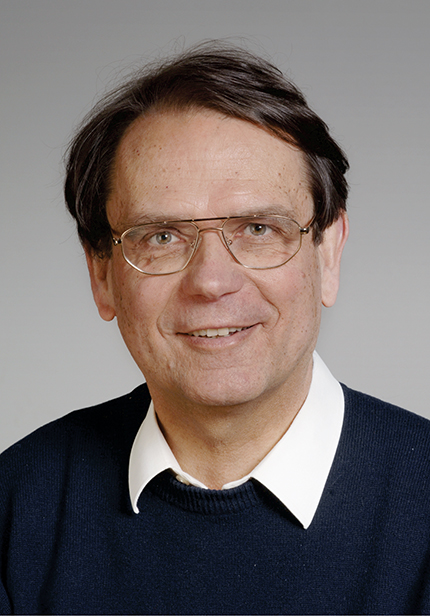Karl-Heinz Rieder
DOI: 10.1063/PT.3.3771
Physicist and surface scientist Karl-Heinz Rieder, referred to by colleagues as the “quiet pioneer,” died in Zürich, Switzerland, on 7 March 2017 following a prolonged illness.

Karl-Heinz Rieder

Born on 1 September 1942 in Eisenstadt, Austria, Karl-Heinz studied physics and mathematics at the University of Vienna. During his studies, in 1965 he was able to attend the Lindau Nobel Laureate Meeting, an annual gathering in Germany that brings together about 30 Nobelists and hundreds of young scientists. He met such luminaries as Otto Hahn, Paul Dirac, and Werner Heisenberg, who greatly influenced his career.
In 1968 Karl-Heinz obtained his doctorate at the Seibersdorf Laboratories in Austria. His thesis was on inelastic neutron scattering of microscopic crystallites, a subject he continued working on after he took a position at the Max Planck Institute for Solid State Research in Stuttgart, Germany. In 1975 he moved to the IBM Research Laboratory in Rüschlikon, Switzerland. There he and Thomas Engel developed helium scattering as a method to study surfaces. Ten years later he went to the Free University of Berlin, where he initially continued to work on elastic and inelastic helium scattering and on high-resolution electron energy-loss spectroscopy.
Subsequently, Karl-Heinz became active in low-temperature scanning tunneling microscopy; his research group was the second, after the IBM Almaden group, to manipulate individual atoms, molecules, and surfaces. He retired in 2005 yet continued to work at the Swiss Federal Laboratories for Materials Science and Technology in Dübendorf and at the Fritz Haber Institute in Berlin.
Karl-Heinz’s accomplishments cover a broad range of surface science. As a result of his work, helium scattering and helium-atom microscopy have become established methods for studying surfaces down to atomic resolution. Early in his tenure at IBM, he realized the impact of the scanning tunneling microscopy technique that his colleagues Gerd Binnig and Heinrich Rohrer were developing in the late 1970s. He loaned them his single-crystal samples for the initial measurements, and he sometimes received them back as molten lumps of metal.
Karl-Heinz might be most renowned for his later work developing methods for targeted manipulation of individual atoms and molecules at surfaces. His measurements offered insight into the fundamental physics of place-exchange processes, the associated forces, and excitation by transient attachment of electrons. In a particularly noteworthy achievement, he and his group used a scanning tunneling microscope as a nanoscale manipulator to conduct the chemical synthesis of an organic species one molecule at a time by forming a covalent bond between two surface-attached phenyl radicals. In the 1990s they studied graphene nanoribbons.
In addition, Karl-Heinz is remembered for his appreciation of the arts. For instance, a humorous poem he wrote about the surface-science community was included in the special issue of Journal of Physics published in his honor for his 70th birthday. A clarinet and saxophone player, he was part of several ensembles. For a while, he also focused on painting.
Karl-Heinz had a unique combination of scientific curiosity, brilliance in predicting experimental results, openheartedness, and supportiveness— always seasoned with kind humor. Those attributes enabled his research group to prosper and its members to feel appreciated and ready to tackle grand challenges. Despite his success, Karl-Heinz remained humble. His coworkers treasure the time they spent in his research group; some 20 of them are now faculty members at various research universities in Germany, the US, Austria, Switzerland, and elsewhere. The guidance Karl-Heinz gave and the example he was to them has made them better group leaders. He has achieved a lasting impact on the surface-science community in particular. He is missed most for his kindness and generosity.
More about the Authors
Ludwig Bartels. University of California, Riverside.
Saw-Wai Hla. Argonne National Laboratory, Lemont, Illinois, Ohio University, Athens.
Joseph Manson. Clemson University, Clemson, South Carolina.
Alexis Baratoff. University of Basel, Basel, Switzerland.
Leonhard Grill. University of Graz, Graz, Austria.
Karl-Heinz Ernst. University of Zürich, Zürich, Switzerland.
